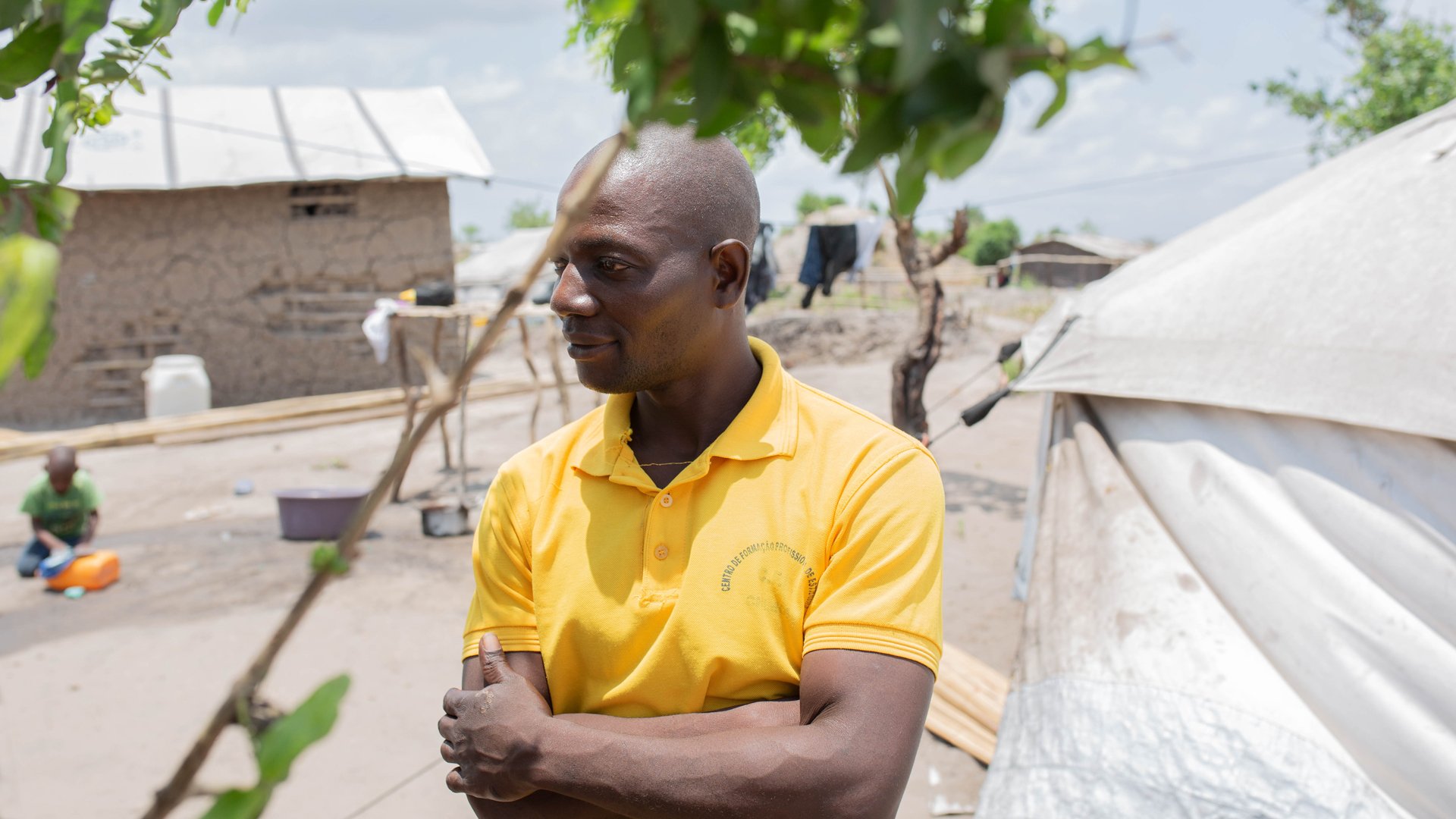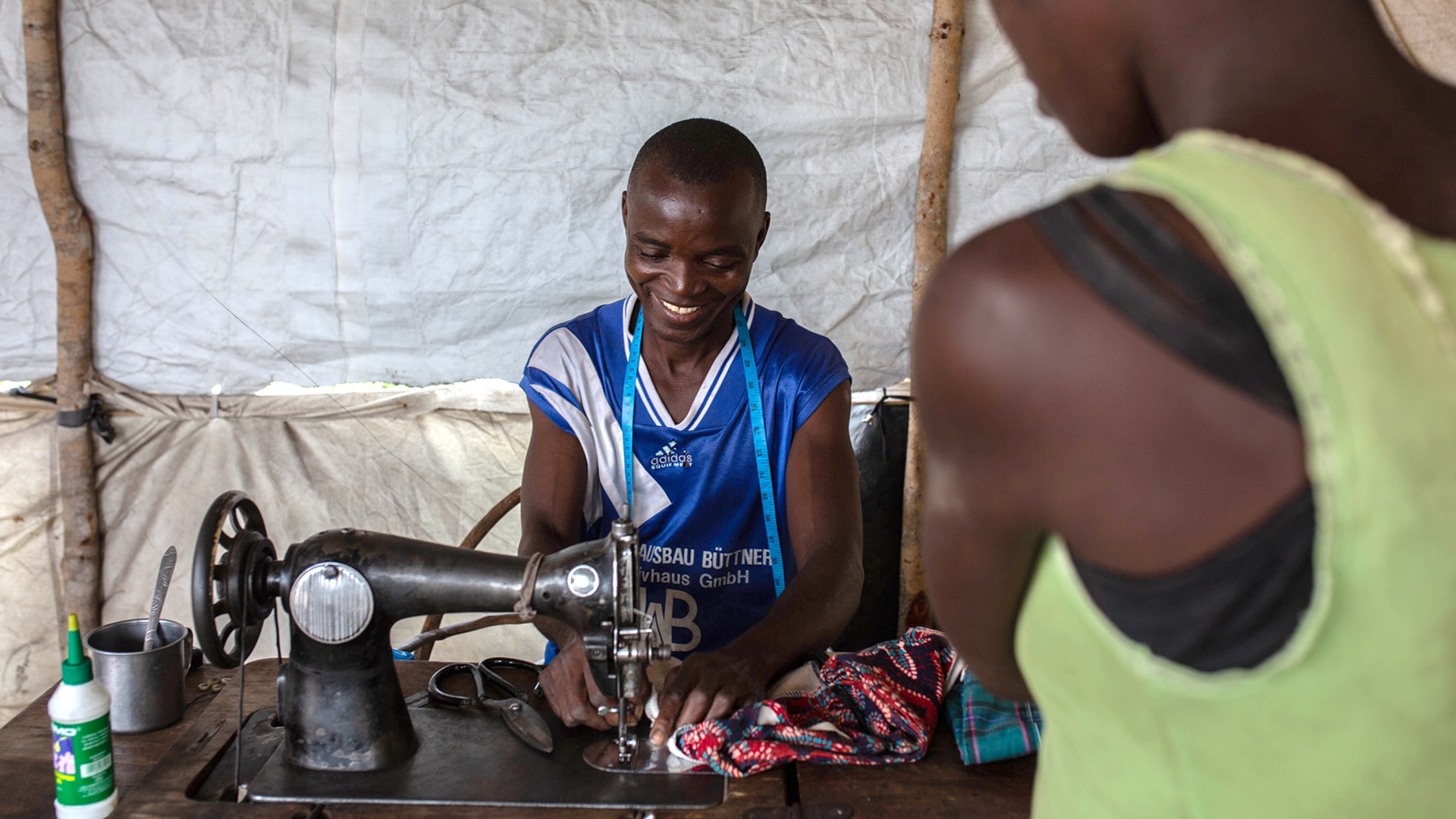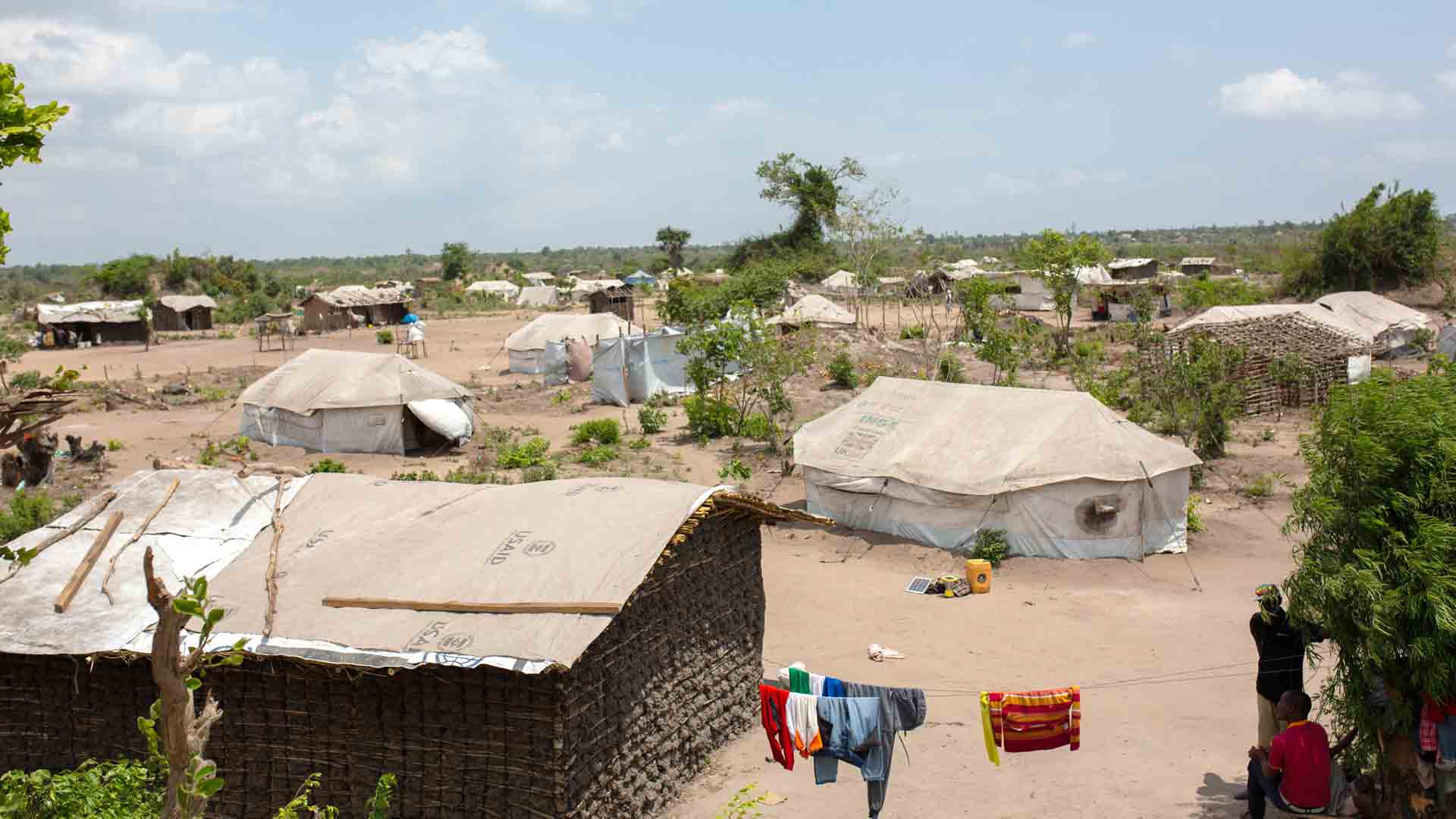When his house was flattened and farm flooded by Cyclone Idai, the government of Mozambique offered José Antonio space in a resettlement village. He hoped to receive a new house and a job in the neighbourhood. Instead, he found a tent in a forest.
Back-to-back weather disasters – Idai in March and Cyclone Kenneth in April – left hundreds of Mozambicans dead and almost 2.2 million in need of urgent assistance. Around 90,000 cyclone survivors have since been relocated to 66 supposedly permanent resettlement villages.
The new neighbourhoods are meant to protect victims from future disasters: they are built away from low-lying, flood-prone areas that have long left people here vulnerable to windstorms, ocean surges, and floods.
But aid groups say the resettlement process was “rushed” through by a government eager to look proactive during an election year, and point out that many months after people started arriving, the sites still lack basic humanitarian necessities.
Many resettlement sites – like Mutua, where Antonio lives – are located in remote rural areas, leaving residents dependent on food supplied by aid agencies and with few long-term employment prospects beyond what they can hawk to each other.
Most of these new neighbourhoods have no schooling beyond first or second grade, insufficient access to healthcare services, and lack communal spaces that would help them feel more like home.

At Mutua, most of the roughly 2,000 residents are still living in emergency tents that heat up like ovens during the scorching hot days and are unlikely to withstand the coming rains, let alone another cyclone like Idai.
Roughly 30 families have already left, according to residents, while dozens who arrived on a bus last May took one look at the sprawling, sandswept site – chiselled out of a forest – and turned straight back home.
“They realised it wasn’t a place to live,” said João Manuel, a Mutua resident.
The election rush
This isn’t the first time Mozambique has experimented with resettlement following a natural disaster. After heavy flooding stuck central Mozambique in 1977, the government built scores of new villages for hundreds of thousands of people.
Successive floods brought successive resettlements, “with some good experiences and some bad ones”, recalled Álvaro Carmo Vaz, a professor of engineering at Mozambique’s Eduardo Mondlane University.
Vaz explained how many residents left the old sites when promised infrastructure failed to arrive, and how others drifted between the new sites and their former villages, which lay in flood plains where the soil was naturally richer and more plentiful.
Read more → Briefing: Mozambique’s post-cyclone problems multiply
After Idai and Kenneth – among the worst weather-related disasters to ever hit southern Africa – aid agencies warned that months of rigorous site-planning would be needed to figure out where to put the neighbourhoods. But with elections down the road, the government was in a hurry.
By mid-June, more than 100 temporary accommodation centres for displaced people were closed and residents given a simple choice: be resettled or return home. Tens of thousands chose the first option. Many were disappointed.
Bleak prospects
Three kilometres from the nearest neighbourhood, Mutua was already occupied when Antonio and the others residents first arrived in May: by monkeys, gazelles and poisonous snakes hanging in trees and bushes.
Months later, the site has started to show signs of human settlement: there’s an animal farm with a few ducks running around, a barber shop, a tailor, and vendors selling biscuits and drinks outside their tents.
But there’s little else. Most people remain in worn-looking shelters that make the site look more like a refugee camp than a neighbourhood. With no electricity, residents say they get bitten by snakes at night – and robbed by people they cannot identify.

A temporary learning space has been set up, but it can only cater for children in first or second grade. Older kids trek three kilometres each morning down an unlit dirt path. Some concerned parents have stopped their children from going.
Jobs here are non existent. Antonio used to be a trainee mechanic, but in Mutua there are no cars or trucks to fix. Relocated inland, fishermen have lost access to the sea. Farmers are now seven kilometres from their fields.
“We used to have our farms,” said Fernando Moisés, a 23-year-old with a young child. “Now we rely entirely on food from aid groups.”
Even the aid groups agree that the food provided is insufficient. Residents say that one HIV-positive man in Mutua passed away in October because he wasn’t getting enough nutrition from bland rations of oil, beans, and cassava flour.
“Time and again resettled residents have told our colleagues that they don't have enough to eat,” said Vittorio Infante, humanitarian policy and advocacy advisor at Oxfam.
Though some resettlement sites are located closer to villages with rudimentary services, many are even more remote than Mutua and have even worse services, according to recent site assessments by the UN’s migration agency, IOM.
Most aid groups have focused their attention and resources around Beira, a port city of roughly half a million people on Mozambique’s east coast – but the sites are spread out across a large geographical area, some close to the western border with Zimbabwe.
That has left several places with no schools or medical services whatsoever, and many more with insufficient supplies of water, mosquito nets, mats, blankets, and basic hygiene products.
In some neighbourhoods, aid workers said children walk up to eight kilometres to the nearest school. In others, 11-year-olds are attending classes intended for those aged six to seven because the high school is too far and that’s all that’s offered on-site.
Sick residents face similar challenges accessing health clinics – in some cases having to walk 15 kilometres. The distance has forced some residents with chronic illnesses like HIV and tuberculosis to stop taking their medication altogether.
Read more → Fear, hunger, and mystery killers stalk Mozambique’s Cabo Delgado
Plots of land for agriculture are meanwhile not being issued fast enough by the government, creating further concerns about future food security as the new harvest season begins. Many residents have taken to farming outside their tents.
Erected in a hurry, the “ad hoc” resettlement sites have been planned with little input from residents, aid workers added. Few have central markets, spaces for community events, or much character at all.
“There are no activities, no sports or culture,” said Edouard Salvadore, another Mutua resident.
Rainy season arrives
The poor state of the sites is set to be tested with the rainy season already underway in Mozambique. Neither residents nor aid workers said the tarp and pole tents the majority of people are still living in are likely to fare well.
Attempts to build drainage systems were put on hold at some sites because aid groups discovered unexploded ordnance left behind after Mozambique’s civil war. At least two sites were also built in areas still at “high risk” of future flooding.

At Mutua, residents said they fear a bridge one and a half kilometres away may collapse or disappear underwater – as it has in past rainy seasons – cutting the site off from neighbouring villages.
Rather than resettling people, some agencies and donors have prioritised initiatives that allow people to adapt better to their flood-prone areas: reconstructing houses in a more resilient way, for example, or developing stronger early warning systems for future disasters.
But donors and aid groups have by and large focused their efforts on emergency relief, leaving little budget for reconstruction. Most residents that choose not to be resettled have patched up their houses using the same materials that blew apart when the two cyclones hit.
Without work prospects, the concern is that those resettled will soon return home – as has happened many times in the past. According to the IOM, just 11 percent of residents surveyed said they expected people to stay in the sites permanently.
But the memories of Idai still haunt many people here. Antonio, the Mutua resident, lost friends and loved ones in April – some died stranded on their roofs, others drowned in a crocodile infested river. He said he’ll stay put in Mutua – whatever the personal cost.
“Seeing your family dying,” he said, before a short pause. “I won’t be able to go back there.”
pk/ag






